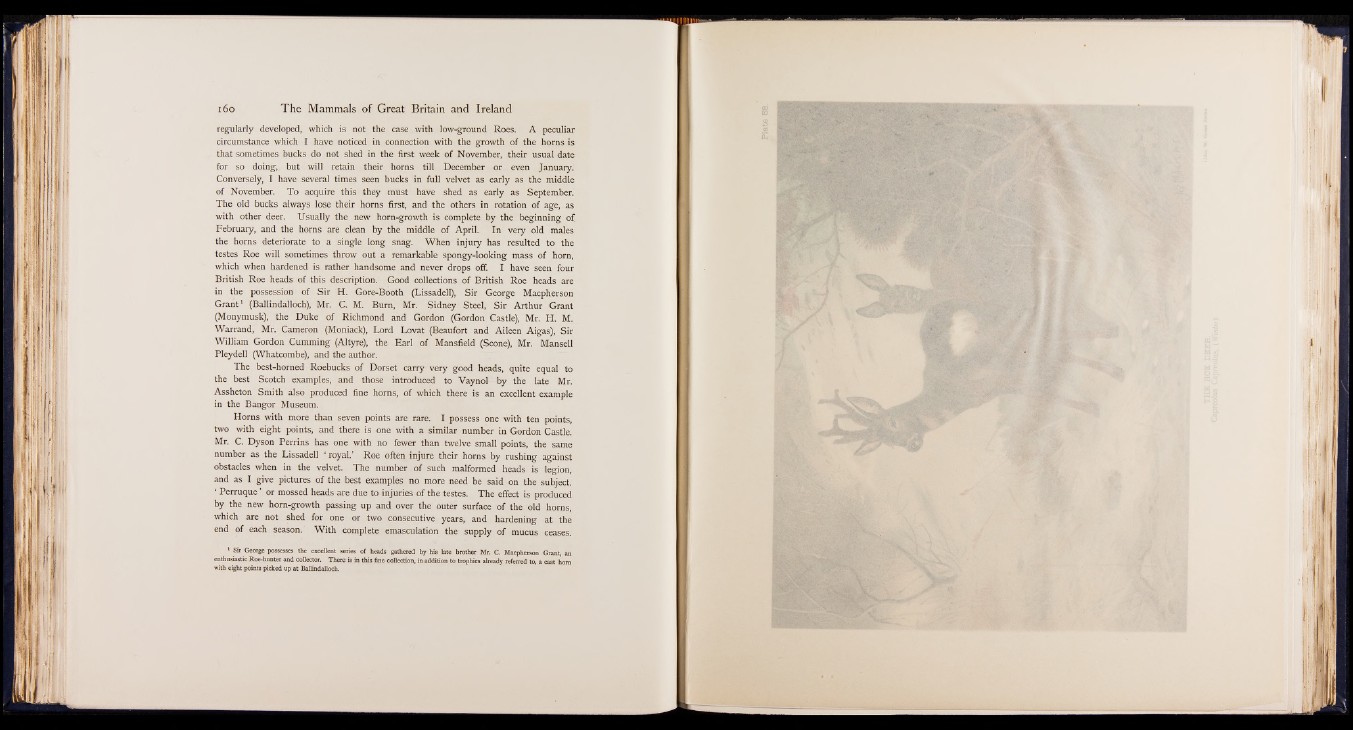
regularly developed, which is not the case with low-ground Roes. A peculiar
circumstance which I have noticed in connection with the growth of the horns is
that sometimes bucks do not shed in the first week of November, their usual date
for so doing, but will retain their horns till December or even January.
Conversely, I have several times seen bucks in full velvet as early as the middle
of November. To acquire this they must have shed as early as September.
The old bucks always lose their horns first, and the others in rotation of age, as
with other deer. Usually the new horn-growth is complete by the beginning of
February, and the horns are clean by the middle of April. In very old males
the horns deteriorate to a single long snag. When injury has resulted to the
testes Roe will sometimes throw out a remarkable spongy-looking mass of horn,
which when hardened is rather handsome and never drops off. I have seen four
British Roe heads of this description. Good collections of British Roe heads are
in the possession of Sir H. Gore-Booth (Lissadell), Sir George Macpherson
Grant1 (Ballindalloch), Mr. C. M. Burn, Mr. Sidney Steel, Sir Arthur Grant
(Monymusk), the Duke of Richmond and Gordon (Gordon Castle), Mr. H. M.
Warrand, Mr. Cameron (Moniack), Lord Lovat (Beaufort and Aileen Aigas), Sir
William Gordon Cumming (Altyre), the Earl of Mansfield (Scone), Mr. Mansell
Pleydell (Whatcombe), and the author.
The best-horned Roebucks of Dorset carry very good heads, quite equal to
the best Scotch examples, and those introduced to Vaynol by the late Mr.
Assheton Smith also produced fine horns, of which there is an excellent example
in the Bangor Museum.
Horns with more than seven points are rare. I possess one with ten points,
two with eight points, and there is one with a similar number in Gordon Castle.
Mr. C. Dyson Perrins has one with no fewer than twelve small points, the same
number as the Lissadell ‘ royal.' Roe often injure their horns by rushing against
obstacles when in the velvet. The number of such malformed heads is legion,
and as I give pictures of the best examples no more need be said on the subject.
‘ Perruque ’ or mossed heads are due to injuries of the testes. The effect is produced
by the new horn-growth passing up and over the outer surface of the old horns,
which are not shed for one or two consecutive years, and hardening at the
end of each season. With complete emasculation the supply of mucus ceases.
1 Sir George possesses the excellent series of heads gathered by his late brother Mr. C. Macpherson Grant, an
enthusiastic Roe-hunter and collector. There is in this fine collection, in addition to trophies already referred to, a cast horn
with eight points picked up at Ballindalloch.